Support CleanTechnica’s work through a Substack subscription or on Stripe.
Why would you build electric vehicle charging bays in the middle of the Gobi Desert? “If you build it, they will come?” They certainly will — going by the latest stats coming out. China is building out the highways and necessary electric vehicle support infrastructure throughout its less developed northwestern provinces. I know, I was there, travelling through the Xinjiang Uygur Autonomous Region (XUAR), viewing ancient monuments and incredible scenery!
We have just returned from a month’s China trip, retracing parts of the Silk Road trade route. We started in Xian (yep, the Terracotta warriors) and ended in Beijing. But in the middle, we spent time in the Uygur Autonomous Region. This vast area bordering Russia is an energy powerhouse. The bullet train sped past solar power plants, wind farms, and even towers which concentrated solar to melt salt and store energy. Then on to the bus where we passed coal mines, gas extraction plants, and oil refineries. High-tension power lines ruined a lot of our photos!
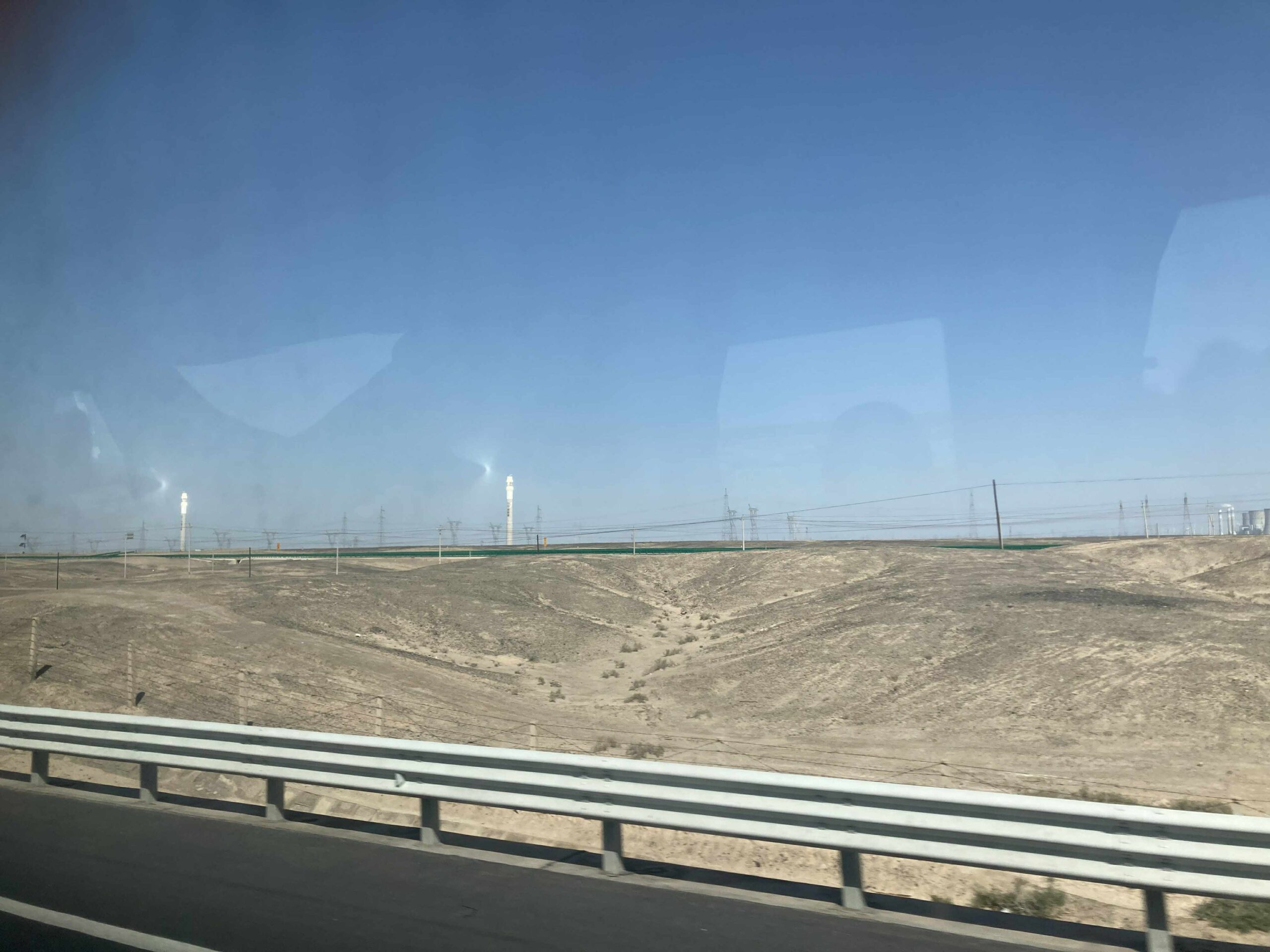
The bus travelled along aerial bridges that spanned canyons, through tunnels carved into the mountains, and along winding highways (some newly built) with breathtaking views of the valleys. Every couple of hours, we stopped to attend to our necessary comforts. And there were the chargers. Not many electric cars, yet. But the chargers were there and being powered by solar canopies over the car park. China is forward planning. There will be no whinging about not enough chargers to support the rising tide of EV uptake.
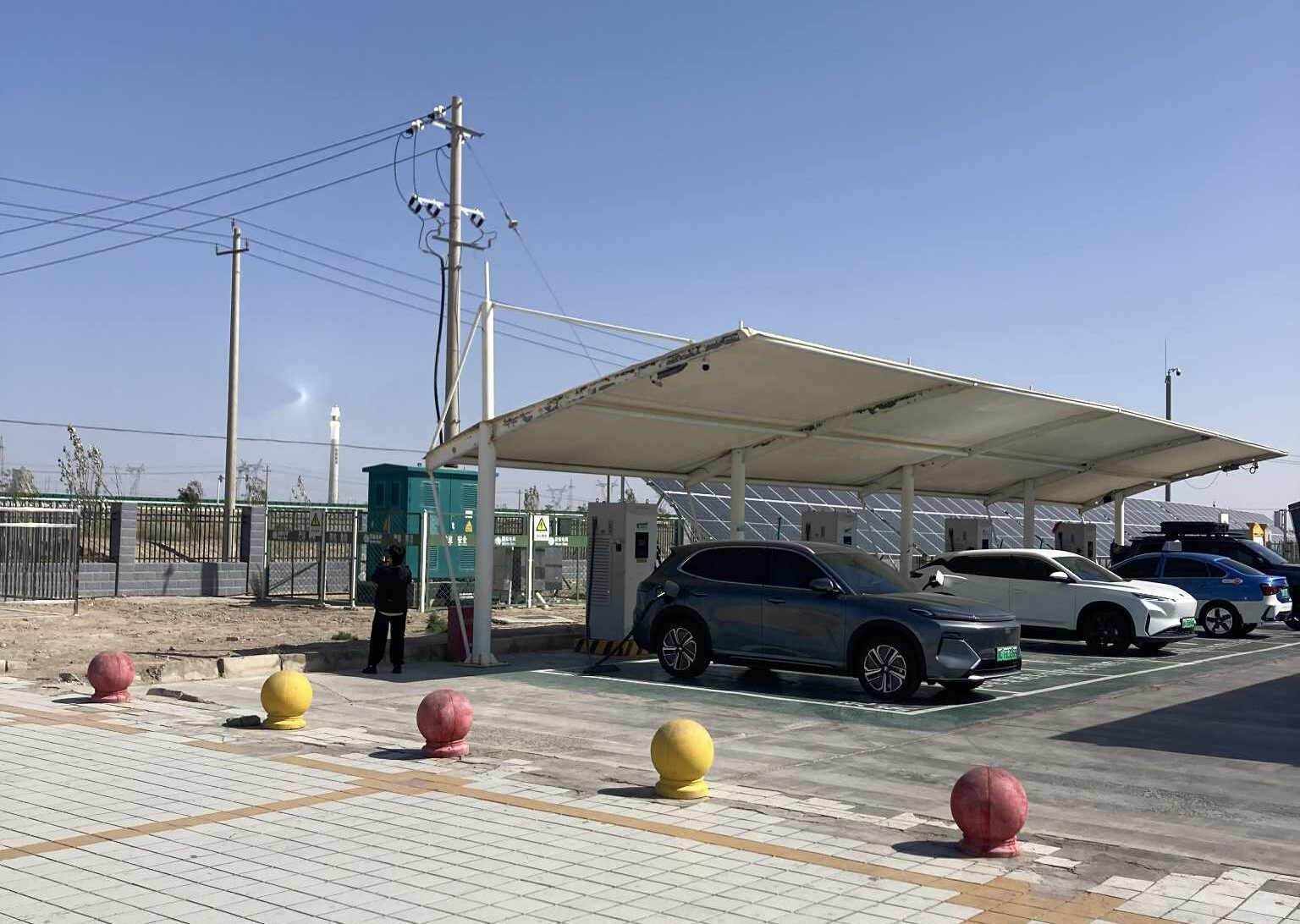
I tried not to annoy my fellow travellers with comments about China’s EV revolution. But they got the point. This was the least developed part of China and they were heading full speed into the rEVolution. There were a few EVs at places we stopped — not like Beijing where it seemed there were about an equal number of EVs on the street as petrol-powered cars. But the EVs are on the way to the northwest.
This was our third trip to China. You can read about our earlier trips here and here. Again, we were astounded by the rate of progress. Everywhere there were signs of construction — bridges and rail lines for the bullet trains and trucks. So many trucks whizzing past the wind turbines.
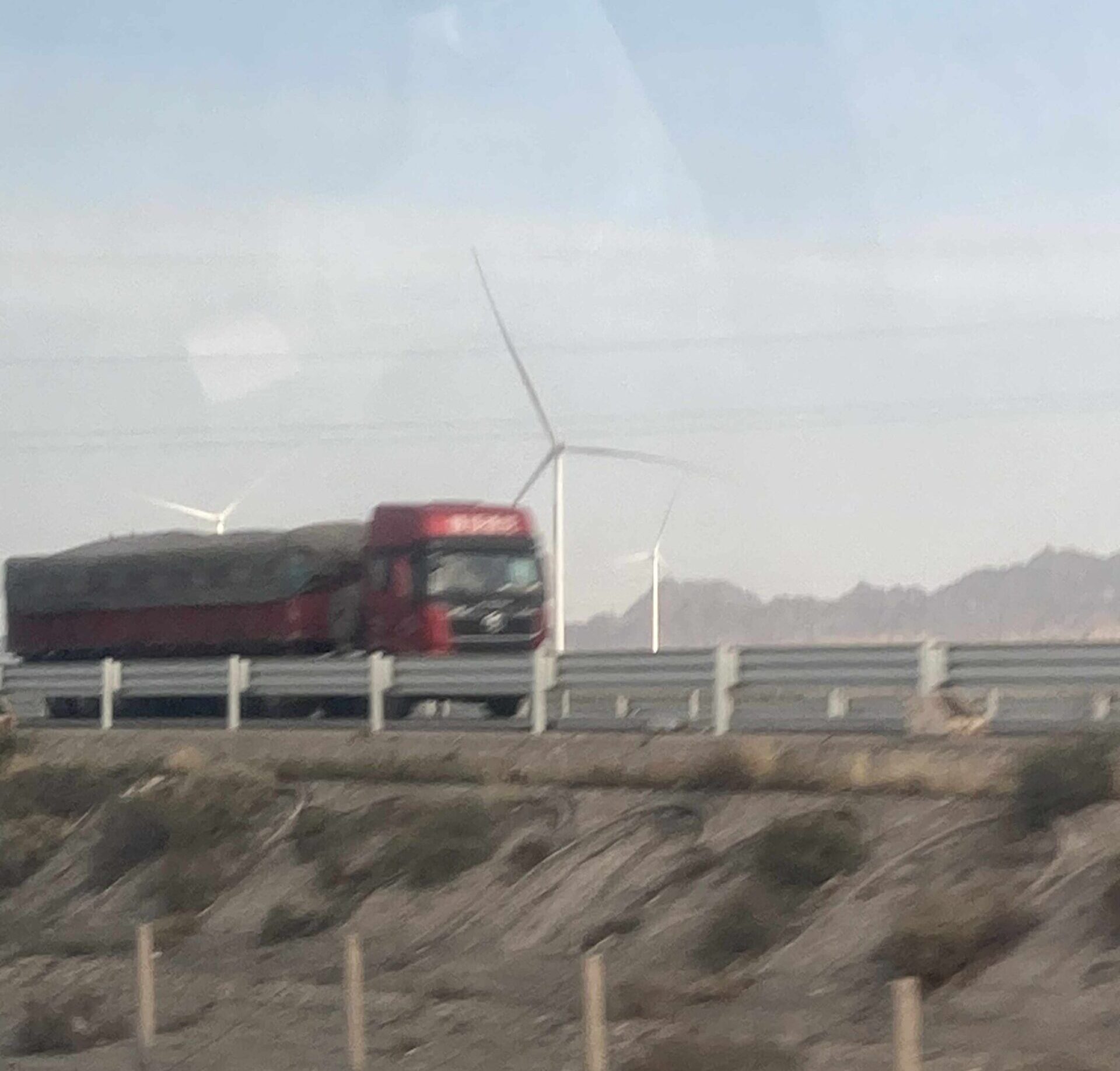
Metropolitan buses were electric — but tour buses were diesel. We asked our tour guide why? “People travelling on EV buses get dizzy,” he told me. I thought that it was more likely that there is no government mandate yet. Citywide mandates cover the metro buses. China is so alive. So much life everywhere. I wondered how they managed to get enough sleep. The food was great and served to us in abundance. We even got to try yak butter and yoghurt. In one shrine, they even made Buddha statues out of the yak butter.
At Jiayugan, we were intrigued to find two camouflaged SUVs parked outside our hotel. The next morning, we managed to strike up a disjointed conversation with the drivers. They were downloading data from the cars. These were two new 3-row models coming out from Great Wall Motors — one petrol and one EV. They were being tested for range and ability in the desert, with temperatures ranging from minus 20 degrees Celsius to 50 degrees Celsius. Majella got to sit in the aircraft-quality seats in the EV, but sadly we were not allowed to take any photos of the interior. Needless to say, it was very high tech!
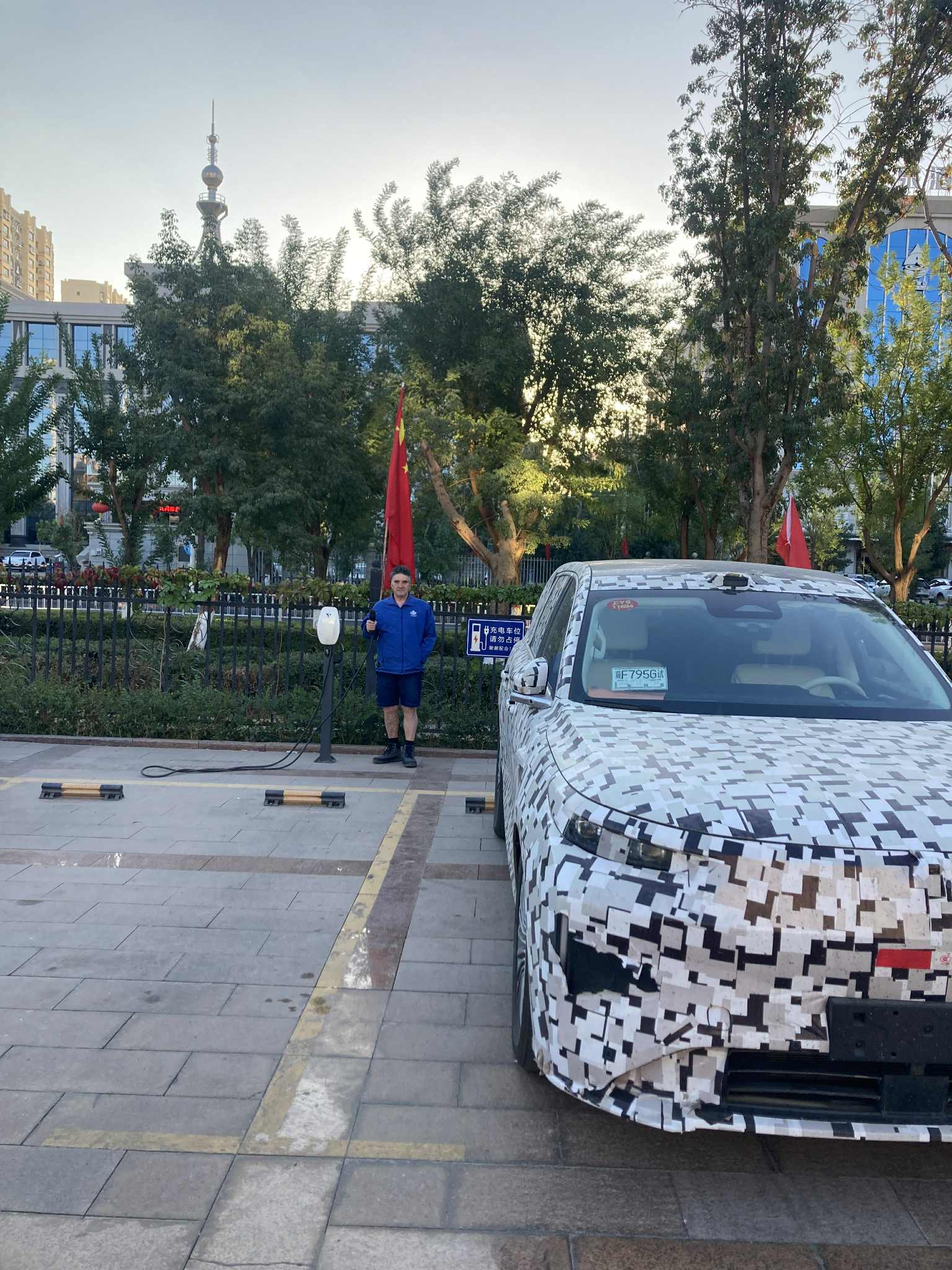
That night I indulged my inner child by driving the dodgem cars in the kiddies play area next to the hotel — they were electric too!
“Ni hao,” I said to everyone I encountered. The people were most friendly and generous. On the banks of the Peacock River in Kurla, we had a great conversation with a bank worker who drives an electric Geely. He was very pleased when I complemented him on his English — he told me he had not spoken it for 17 years. University students we chatted to gave us presents (I love my little teddy bear), and one couple shared their beef jerky after we climbed the furthest western stretch of the Great Wall in Jiayuguan.
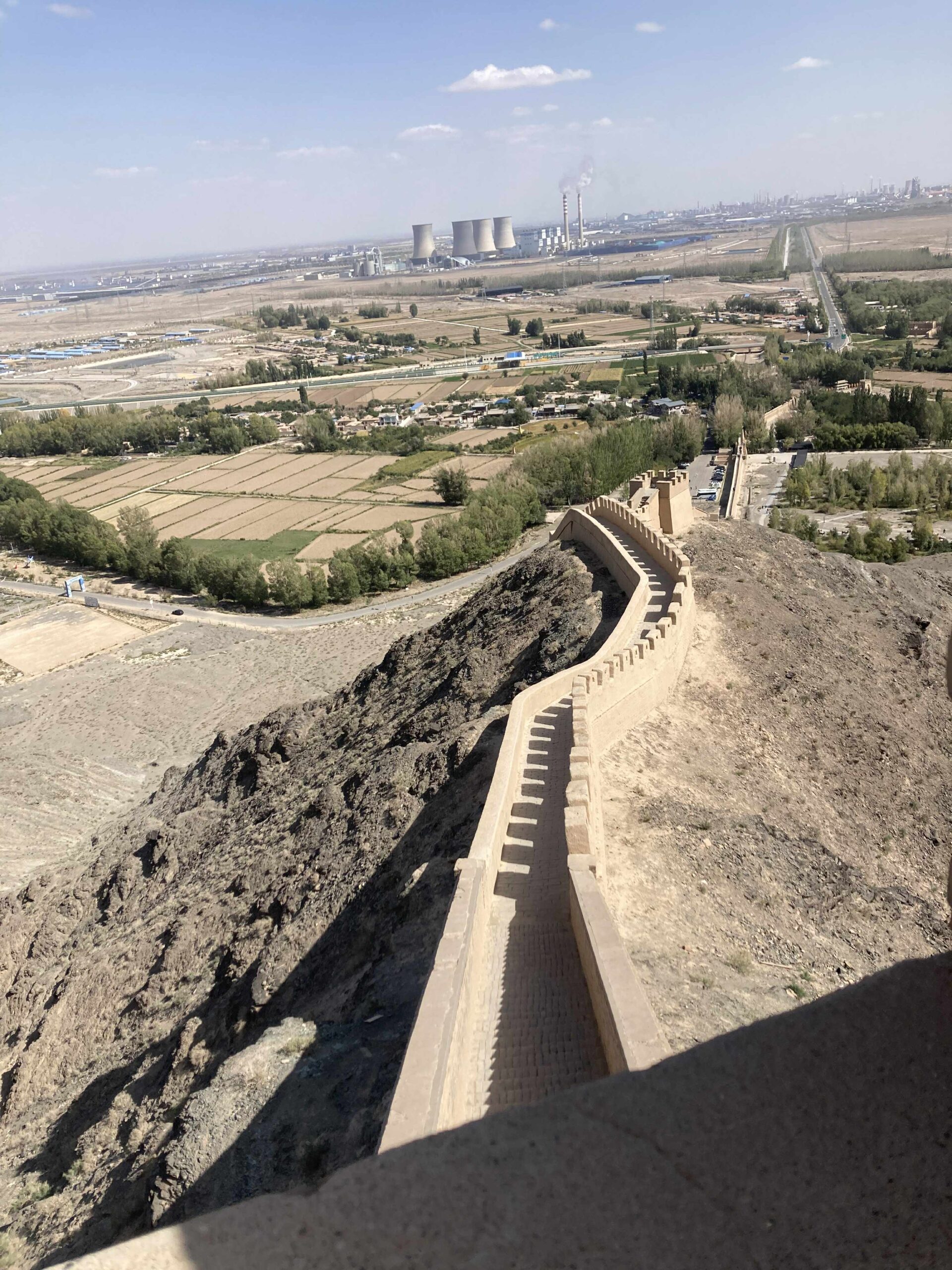
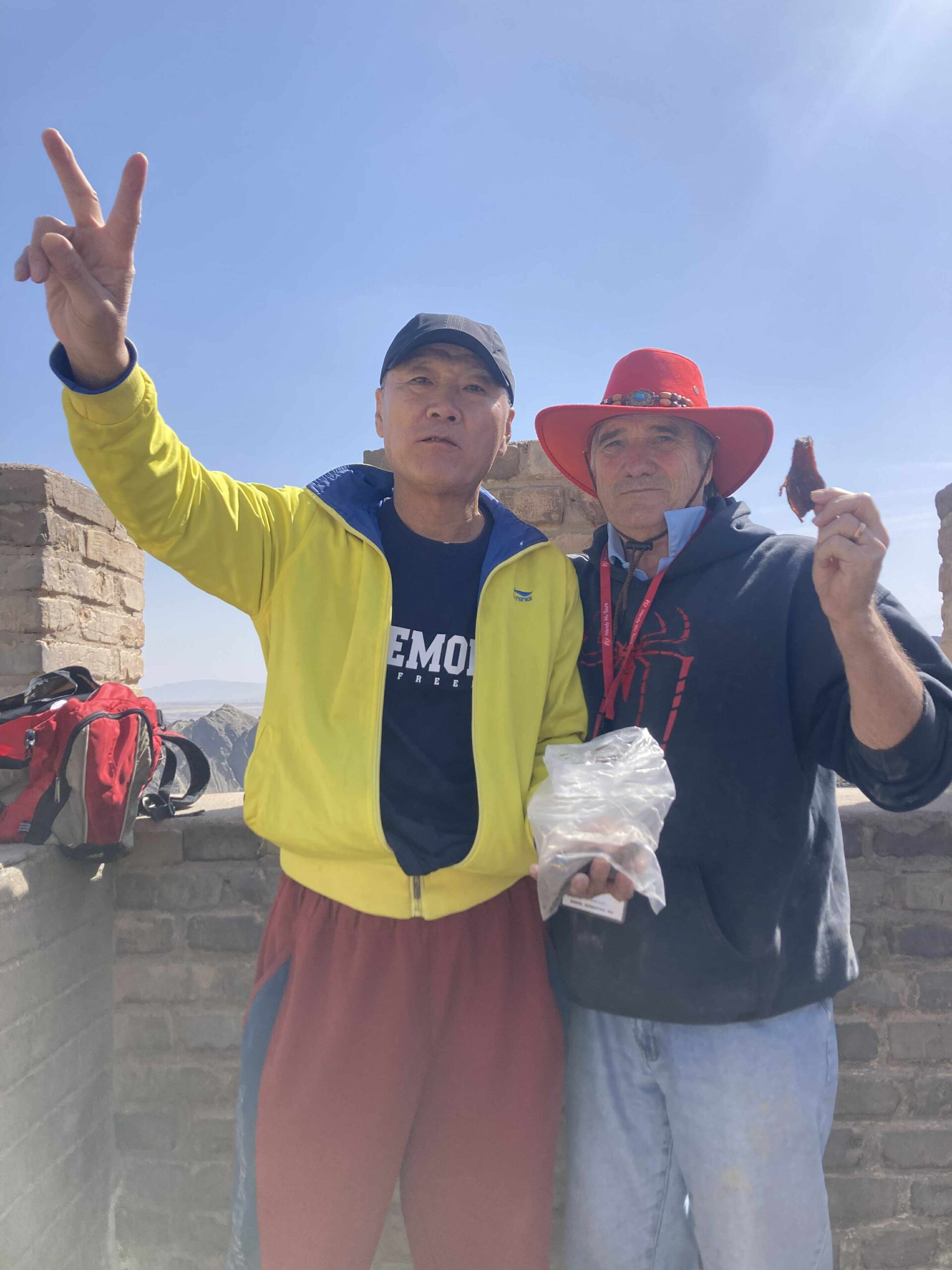
In Kashgar, almost on the Russian border, we were told that the traditional donkey carts were rapidly being replaced by electric three-wheelers. And the donkeys — were they enjoying a well-earned retirement? No, they were being turned into delicious, highly spiced dishes! Before you get upset, this is the same fate that working horses faced in western nations when motorcars replaced them for transport and farm work. The petrol bikes and trikes unfortunately can’t be eaten — we saw a truckload of them, squashed and off to get recycled. Unfortunately, the truck passed us too fast to get a photo.
We saw a lot of beautiful scenery in amongst the sightings of progress and electric vehicles. At the Heavenly Lake atop Bogda Mountain in Urumqi, environmentally friendly electric buses took us up the mountain to the volcanic crater lake. Even tough there was a bank of high-speed chargers in the bus parking lot, I couldn’t help thinking that they wouldn’t get much use due the massive amount of regen created when the buses full of tourists came down the mountain.
The Wendy Wu Silk Road Explorer tour took us along parts of the ancient Silk Road trade route through cities like Lanzhou with it’s Buddhist grotto by the lake, through mountain passes to the heights of Xiahe, through the Hexi Corridor to the edge of the Taklaman Desert, and further to the west. At Kashgar, we turned and headed east, back to Beijing and then home. That evening in Beijing, we walked past a Tesla Model Y Long parked in the street. I was thrilled to see this new model “in the flesh” so to speak.
I could go on and on, but then this would be a travelog and not a tribute to China’s careful planning for an electric future. And no, I wasn’t sponsored by any EV carmaker or by Wendy Wu. Many thanks to our national and local guides who shared so much information with us, especially where the next toilet was located! They kept us safe (even when we got into trouble) and found us when we got lost! Thank you, Louis. China’s present and future is most certainly bright and electric.
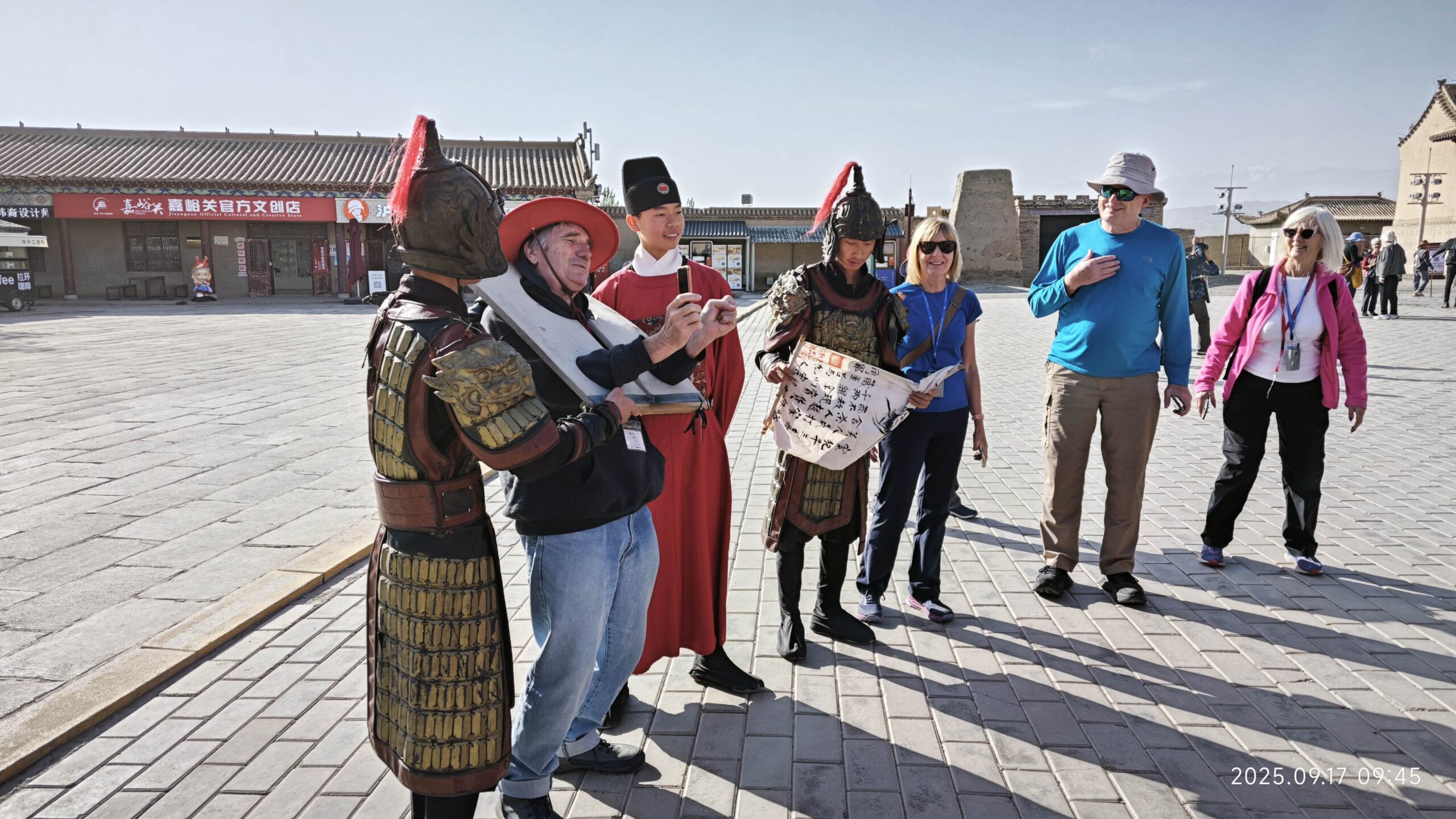
Sign up for CleanTechnica’s Weekly Substack for Zach and Scott’s in-depth analyses and high level summaries, sign up for our daily newsletter, and follow us on Google News!
Have a tip for CleanTechnica? Want to advertise? Want to suggest a guest for our CleanTech Talk podcast? Contact us here.
Sign up for our daily newsletter for 15 new cleantech stories a day. Or sign up for our weekly one on top stories of the week if daily is too frequent.
CleanTechnica uses affiliate links. See our policy here.
CleanTechnica’s Comment Policy



